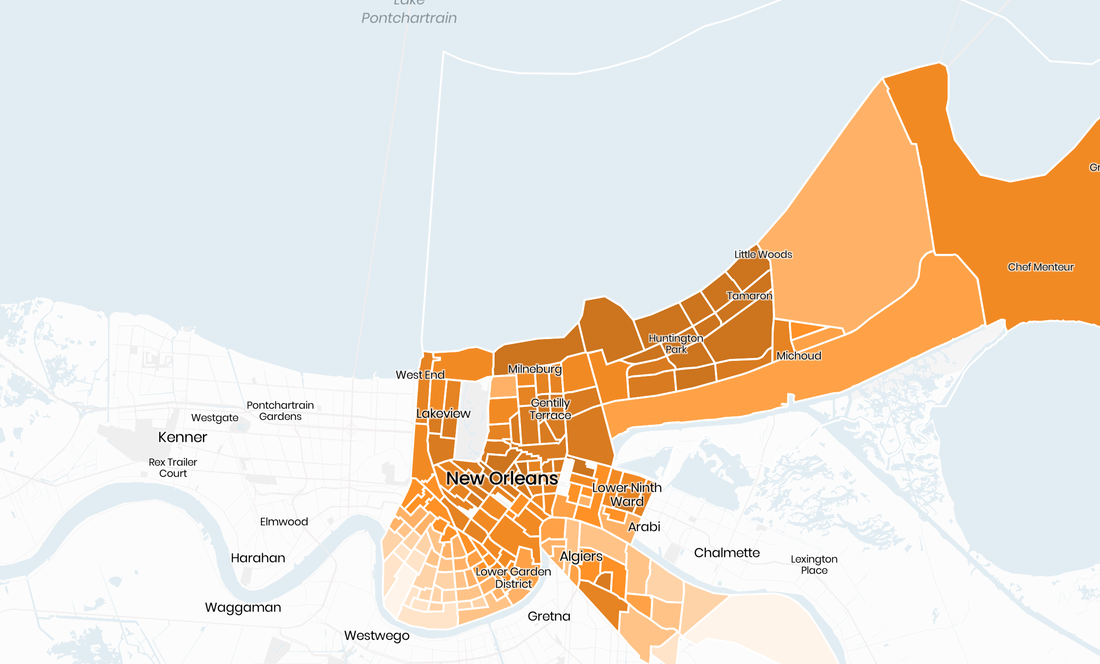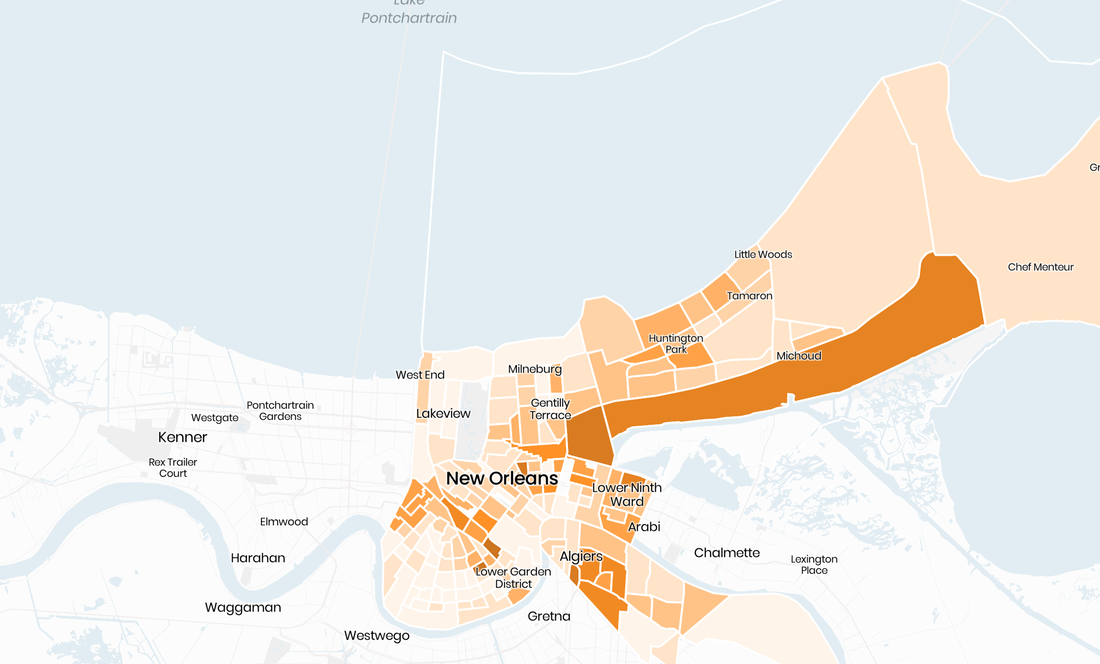The Council is seeking to make the benefits of Energy Smart more accessible to ratepayers and to accelerate the adoption and deployment of energy-saving technologies, including solar and battery storage systems.
A major focus of the Alliance’s comments is poor performance of Energy Smart among income-qualified ratepayers, who also often live in so-called ‘heat islands’ – areas that maintain average temperatures higher than those of surrounding communities – and bear the highest energy burdens in New Orleans.
 Graphic from Sierra Club Disproportionate Energy Burden Report
Graphic from Sierra Club Disproportionate Energy Burden Report Urban Heat Index
Urban Heat Index Severe Energy Burden above 10%
Severe Energy Burden above 10%As we noted in our comments, “To put it bluntly, [income-qualified] households are paying for a greater share of the residential program budgets than is expended on programs intended to serve them. Even more troubling is that these households, having the greatest need for energy bill relief that could be provided in the form of energy savings, receive an even smaller share of the residential savings—just over 8% on average from PY13 to PY15, despite making up 35% of the households served by ENO.”
Quite simply, this is unacceptable. To remedy this issue, the Alliance has proposed the adoption of a standard whereby 15% of total energy savings should accrue to income-qualified households in programs specifically designed for them, such as the income-qualified weatherization program.
The residential service shutoff moratorium that the Council enacted in August expires today. With the cost of methane (natural gas) still high, and a pending Entergy application for approximately $170M in Hurricane Ida costs that will drive up bills even further, the need for an accessible Energy Smart program that sets people on the path to energy affordability, efficiency, and security is more critical than ever. The Alliance will continue to advocate for equitable solutions to our energy needs.